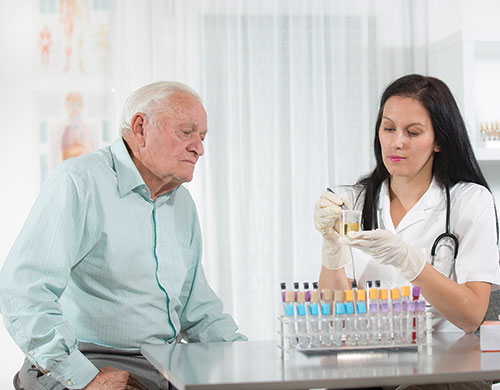
Clinical laboratories will learn later this year how much less Medicare will pay them for clinical diagnostic lab tests as a result of the Protecting Access to Medicare Act (PAMA). The implications of these new rates will be significant for smaller labs and hospital labs alike. Laboratories covered by PAMA have until March 31 to submit data they were supposed to collect from January 1–June 30, 2016, on private payer rates and volume of tests to the Centers for Medicare & Medicaid Services (CMS).
PAMA requires reporting of data by independent labs and physician office labs exceeding $12,500 in Medicare revenues from lab services on the Clinical Laboratory Fee Schedule (CLFS), and receiving more than half their Medicare revenues from lab and physician services during a data-collection period.
CMS plans to post new Medicare CLFS rates based on weighted median private payer rates in November, with the new rates scheduled to take effect January 1, 2018.
Because hospital labs aren’t required to report private payer data under PAMA, Medicare’s prices for tests are expected to align more with the largest commercial labs, said Roger D. Klein, M.D., J.D., principal of an eponymous consulting firm and chair of the Association for Molecular Pathology’s Professional Relations Committee. Larger labs, through contracts with the largest insurers, should be able to counteract the effects of lower test reimbursement rates by providing a higher testing volume. Tests likely to see the largest reimbursement declines are the highest-volume, highly-automated tests.
But, as prices fall, Dr. Klein added, due to the lower payment rates, smaller labs won’t be able to compete with the larger labs to offer those tests, and may opt not to perform them. This could cause increased consolidation among labs, as volume becomes a key driver of viability in the market.
“The impact from PAMA will be significant for the clinical lab—a race to the bottom for reimbursement for routine, non-esoteric testing,” said James Weisberger, M.D., executive vice president, clinical, CMO, and laboratory director for BioReference Laboratories, an OPKO Health Company.
Hospital labs are also bracing for impacts from PAMA. CMS seeks to reduce fees on the largest portion of their test volume—the 25 top lab tests for which Medicare Part B paid $4.1 billion out of the $7 billion spent on all lab tests in 2015.
“If the rate that is reimbursed goes down for some of our tests to the point where our costs are not even covered, that might influence the ability of doctors to order those tests,” said David D. Koch, Ph.D., director of clinical chemistry, toxicology, and point-of-care testing at Grady Memorial Hospital in Atlanta, and Professor of Pathology & Laboratory Medicine at Emory University, and chair of the American Association for Clinical Chemistry’s Policy and External Affairs Core Committee.
This may force hospitals to take a long, hard look at their in-house lab operations and reduce the number able to provide on-site testing services.
“Hospital administrators will say, ‘We’re not making any money on these tests. We can’t afford it.’ And that might lead to those samples being sent to a commercial lab instead,” said Dr. Koch.
Even with extra activity, he added, commercial labs will face the added expense of PAMA compliance, money for which would likely be diverted from reimbursement of providers. At BioReference, Dr. Weisberger said up to three data analytic specialists have been pulled from daily duties to assemble data in a timely fashion: “It will take them approximately 3 to 4 months to parse the collected data. The cost for their time is probably north of $100,000.”
To comply with PAMA, labs first need a revenue cycle management system capable of tracking and extrapolating their data. Until now, many labs have lacked such sophisticated systems, with some relying on spreadsheets, said Rina Wolf, vice president, commercialization strategies, consulting & industry affairs with XIFIN.
CMS has projected a $390 million savings to Medicare in Part B program payments for CLFS tests in Fiscal Year 2018, and a $3.93 billion savings over 10 years.
“We would still have to draw blood from the patient, so the drawing cost is not reduced,” Dr. Koch said. “But now, we’ll have to transport those samples from the hospital to the pickup center or get them to the commercial lab, so those logistic costs go up.
“That process of sending samples to commercial laboratories will slow down patient-care decision-making, and that’s going to be detrimental to patients.”
To see more articles from the January/February issue of Cliniclal OMICs click here.










